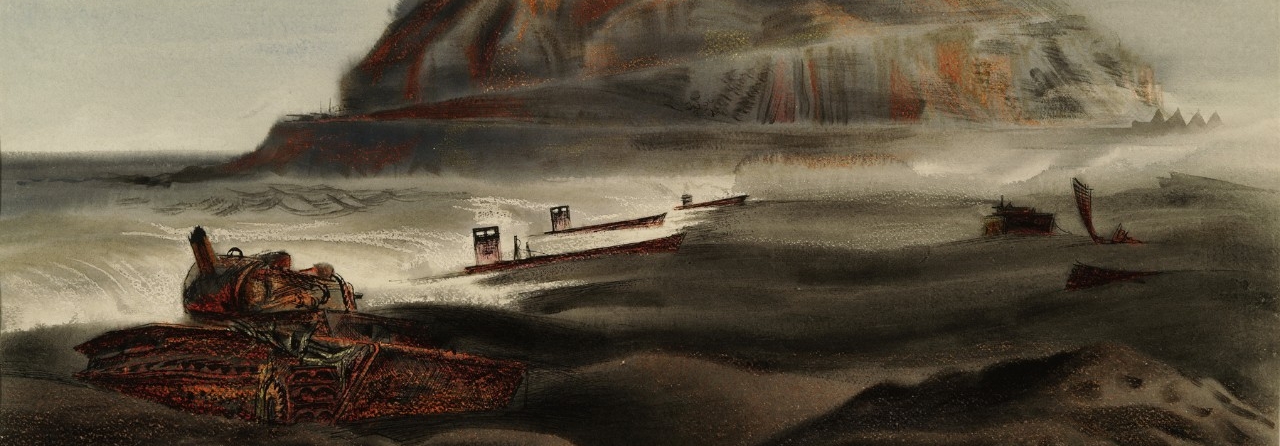
Mitchell Jamieson
Mitchell Jamieson was born in Kensington, Maryland, and attended the Abbott School of Fine and Commercial Arts and the Corcoran School of Art in Washington, D.C. Having already established himself with many noted commissions, he began his duty as an official combat artist when he was commissioned an ensign in the Naval Reserve in 1942.
His first works for the Navy depicted amphibious training. Next, while en route to North Africa, he made a series of paintings on convoy operations. Upon arrival, he sketched the impact of military occupation on North Africa. When the invasion of Sicily took place, Jamieson was among the first wave of assault boats that landed on enemy territory. After the invasion, he was assigned to an escort carrier where he sketched life on board an antisubmarine patrol mission in the Atlantic. He next found himself in England recording the preparation for the invasion of France and painted the landings from the deck of an LST.
After completing the Normandy and Brittany series, he was transferred to the Pacific where he arrived just before the Okinawa invasion. He took part in that invasion and afterwards went to Iwo Jima to sketch the devastation and wreckage from that earlier invasion. He also witnessed the Japanese Surrender on board U.S.S. Missouri in Tokyo Bay on 2 September 1945. During the war the Navy awarded him the Bronze Star. His combat paintings were reproduced extensively in Life, Fortune and other national publications.
At the end of the War in 1945, Jamieson said of his Navy combat art experience,
"I have confined my paintings to what I have experienced and know to be strictly true, at the same time having to adapt my way of working to the pressure of time and swift-moving events. Yet anything that is worthwhile or that has the bite of reality in the work produced under these circumstances probably derives from a constant effort to share as fully as possible in the lives and experiences of others.”
Jamieson received an Award in Art from the American Academy of Arts and Letters (1947) and was twice awarded the prestigious Guggenheim fellowship (1946 and 1948) to assist his artistic creation. He was represented by the Franz Bader Gallery in Washington, D.C. and exhibited there many times from 1958 until his death in 1976. In 1959, Jamieson began teaching at the University of Maryland. Between 1963-1972, NASA commissioned Jamieson three times; first to depict Project Mercury Mission and Saturn launching at Cape Kennedy, second to cover the Lunar Spacecraft Recovery aboard U.S.S. Hornet, and third to paint the Apollo 17 Mission.
In 1967 Jamieson volunteered as a civilian artist, not for the U.S. Navy this time but for the U.S. Army, and went to Vietnam for about one month. Although it was only a short stay, he immersed himself in the scene there, traveling widely, making sketches and taking many photographs. The result was a series of drawings he called “The Plague.” Unlike the mostly sympathetic images Jamieson made of the Second World War, the Vietnam works are angry and accusatory. The difference is due to Jamieson’s moral outrage towards the Vietnam War and his growing pessimism towards America. Some of these works are in the collection of the U.S. Army Center of Military History. Sadly, the depravity and inhumanity Jamieson witnessed in Vietnam and then depicted in The Plague series took its toll on the artist psychologically. In 1976, Jamieson ended his life.


